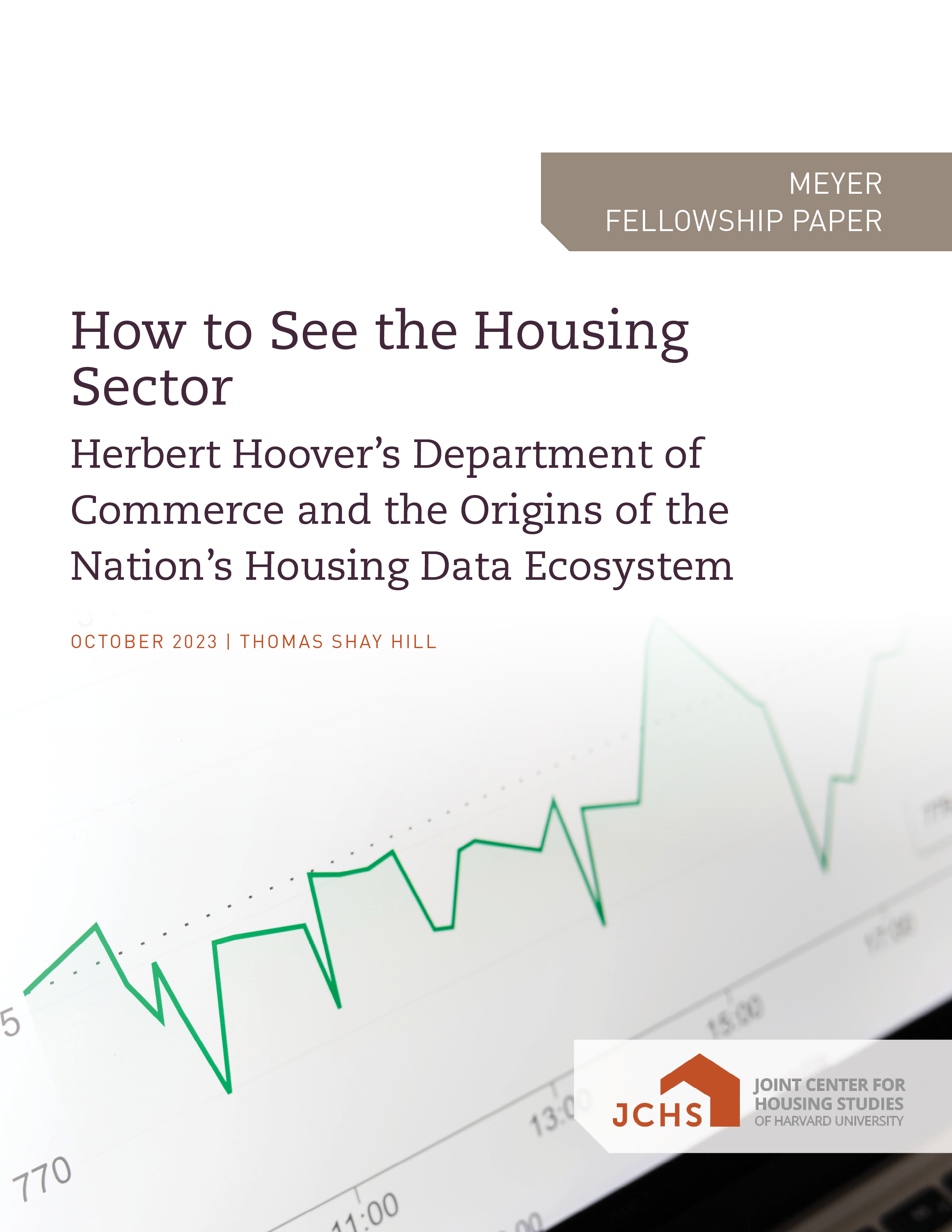How to See the Housing Sector: Herbert Hoover’s Department of Commerce and the Origins of the Nation’s Housing Data Ecosystem
The volatility of the business cycle and an extreme shortage of housing were the twin problems of American economic life in the years following the First World War. Under the leadership of Secretary Herbert Hoover, statisticians at the Department of Commerce came to conceive of these dual problems as two sides of the same coin. The nation’s construction sector was widely perceived as a backward field, prone to collective mania and herd behavior. The sector’s tendency towards boom and bust was simultaneously the primary engine behind the ups and downs of the business cycle and the chief barrier in the way of a well-functioning private market for housing. Stabilizing the construction sector would both tame the business cycle and ensure adequate housing for all Americans, without the need for government-built public housing.
Information was key to the Commerce Department’s vision of a modernized, well-functioning construction sector. Reliable, comprehensive information on prices and construction activity nationwide would allow developers to time their projects accordingly, taking advantage of low material prices during slack periods and avoiding incipient real estate bubbles. Data in the end failed to serve this utopian role. The Department’s studies of housing and construction nevertheless established a government research apparatus and corresponding network of housing scholars which would lay the foundations for the federal housing and mortgage finance programs of the New Deal.

